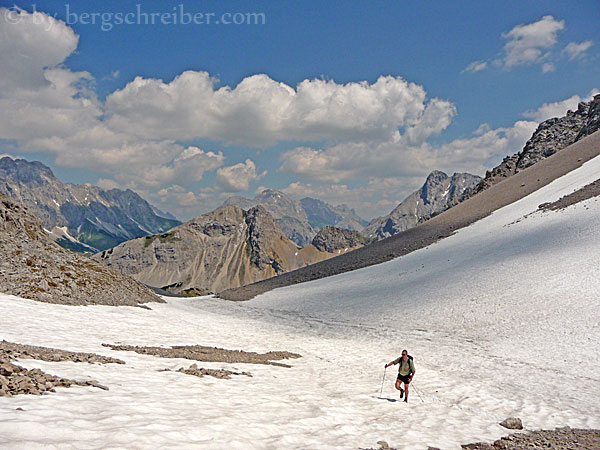Here is an article by Sigmund Haider on the interesting topic of altitude sickness:
In the course of the 19th century, people began to discover the mountains, especially the Alps, as an infinite playground for their desire for conquest. In In the 20th century, the mountain world was increasingly instrumentalized as a playground for the fun society and as an outdoor event by resourceful marketing strategists. Finally, in a return to true values, the Alps are rediscovered in the 21st century as places of strength and spiritual energy filling station. few things have remained –
the longings of mountain enthusiasts on mountain tours
and facing the dangers of the mountains.

The most well-known medical danger to alpine skiing is altitude sickness, also called mountain disease. Most occasional hikers have the assumption that altitude sickness can only occur from a high altitude, such as the ascent of an eight-thousander in the Himalayas. Altitude or mountain sickness (terminus technicus AMS, i.e. “acute mountain sickness”) occurs at altitudes above 2500 metres.
According to scientific studies, altitude sickness is not so rare and affects about one third of all mountain hikers. Alarm signals for altitude sickness include persistent headache, nausea, shortness of breath, rough cough, rapid heartbeat, dizziness and a decline in physical performance. Those who underestimate these warning signs risk a high-altitude and high-altitude brain edema with fatal consequences.
The cause of acute altitude sickness is the lower air pressure and the lower oxygen content of the air at alpine altitudes. The human body is now trying to compensate for the oxygen content with faster breathing and higher resting pulse. For better oxygenation of the body, the number of red blood cells increases, but this increases the risk of circulatory disorders. The risk of life-threatening edema is increasing. Then only the immediate descent to lower altitudes will help. If the symptoms do not subside, it is essential to seek medical advice.
The scenic beauty of the mountains is contrasted with the dangers of the mountains, which must not be underestimated. Especially in organized trekking groups, often careless hikers conceal the symptoms of an approaching mountain disease, with fatal consequences. It is not only the objective dangers – let us think only of the rapidly changing mountain weather – that must be taken into account. Equally important are the subjective dangers that come from human activity and can be limited by proper risk management. That also applies to the dangerous altitude sickness: “Danger detected, danger banished!”
Sigmund Haider, www.bergschreiber.com
11.07.2014





